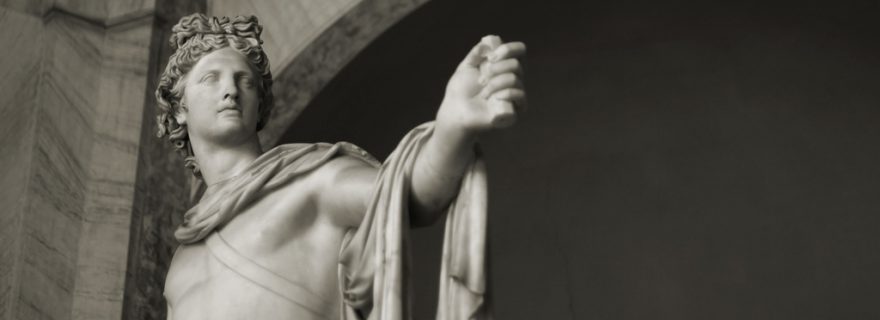Moving heritage: a political issue
We are inclined to 'sacralize' heritage, as if the importance of certain objects has always been seen and recognized and has always been beyond discussion. But meanings attributed to certain objects have always been subject to change.
By defining objects, collections, buildings and other types of heritage as being important for humanity, or at least for part of humanity, we are inclined to make heritage more static than it actually is, as if the importance of certain objects has always been seen and recognized and has always been beyond discussion. We know that this is not true, but heritage specialists, from Unesco to museum curators, tend to think in static terms, make conservation the key issue in their activities, and ‘sacralise’ the heritage they feel responsible for. However, in practice people have always moved heritage objects from one place to another and in the process have often given distinctly different meanings to objects. In an attempt to document such historical processes we can search for ego documents, such as letters and diaries, in which individual reactions are described from people who saw what are now famous heritage objects in other places than where these pieces are nowadays. One example is the diary of the young Arthur Schopenhauer, who travelled through Europe with his parents in 1803-1804.
The public museum is a nineteenth-century invention (see Tony Bennett, The Birth of the Museum, 1995). Although there are many examples of pre-nineteenth century collections and Cabinets of Rarities, the spectacular growth of the number of publicly accessible museums dates from after the French Revolution. Everywhere in Europe museums were seen as instruments in the construction of national states, as instruments for education, and later also as showcases for imperialism and colonialism. The museum as we know it nowadays is clearly a nineteenth-century product. However, hardly any research has been done on the type of people who visited the museums, what they thought of it, and what was the actual outreach of the museums’ exhibitions, publications, research, etc. In addition, more archive work is necessary to get a clearer picture of heritage policies in the nineteenth century, which are probably strongly related to the development of academic disciplines such as archaeology and anthropology. One of the sources in this type of research is personal documents, such as letters, diaries, and other unpublished notes.
The German philosopher Arthur Schopenhauer (1788-1860) grew up in the world of the Napoleonic wars. His father was a successful trader in northern Germany, and his mother was a well-educated woman with of considerable wealth. Later, Johanna Schopenhauer became a well-known novelist and maintained an important ‘salon’ in Weimar, where Goethe frequently visited her. Arthur did not have a good relationship with his mother, which may have been the cause of his low opinion of women in general. In 1803 the young Arthur was taken by his parents on a European tour. His father wanted him to get to know his business relations in Amsterdam, Le Havre, and London, and in the course of the trip Arthur was also supposed to get acquainted with European culture in general. Opera houses, museums, but also shopping activities in Paris, were part of the program. Although regular wars were ravaging parts of Europe, travelling was still possible as long as you did not cross the warring armies. But in any case, 1803 was a relatively quiet year in these decades of unrest and warfare.
The young Arthur kept a diary during the trip. It was first published in German (in 1923), later in French (in 1989), and some parts of the diary are of interest to museums, collections and heritage. On December 7, 1803 Arthur and his family visited the Louvre for the first time. The young boy was very impressed by the Salle des Antiquités. He extensively described his feelings upon seeing the Olympic Gods coming to life again as they were centuries earlier. And then he described the Laocoön group and the Apollo of the Vatican, statues that had been taken by Napoleon from the Vatican after he conquered Rome. For Napoleon it was important to make Paris the capital of the world, not only politically, but also culturally. He therefore regularly took artworks from the areas he conquered to Paris, as private booty or as signs of national prestige to be exhibited in the Louvre. The Laocoön and the Apollo were victims of that policy. Thousands of people saw them in Paris. Schopenhauer described then as ‘living stones with a soul’ - a good example for the ‘Living Presence’ project of Professor Caroline van Eck of the Institute of Art History at Leiden University. People often have the impression that objects are alive, and it is especially art objects that can evoke strong reactions in individual spectators. They want to touch it, to feel it, to love it. The young Arthur Schopenhauer was no exception. He was overwhelmed by all this beauty.
Arthur did not write anything on how these statues came in the Louvre. He was not interested in Napoleon’s behavior in the countries he conquered. In 1803 Napoleon was still admired by many people, particularly intellectuals. And Arthur was interested in enjoying the beauty and the impressive strength of the statues, not in the way they arrived in Paris. So -- ‘moving heritage: a political issue’? Not for the young Arthur Schopenhauer.
The statues Napoleon had taken from the Vatican would later return to the Vatican Museums. They are still there to be admired as icons of classical art.
Source: Journal de Voyage. Edition établie et annotée par Jean d’Hendecourt. Mercure de France, 1989



0 Comments
Add a comment